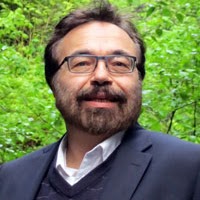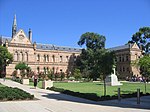Related Research Articles

Code-division multiple access (CDMA) is a channel access method used by various radio communication technologies. CDMA is an example of multiple access, where several transmitters can send information simultaneously over a single communication channel. This allows several users to share a band of frequencies. To permit this without undue interference between the users, CDMA employs spread spectrum technology and a special coding scheme.

Time-division multiple access (TDMA) is a channel access method for shared-medium networks. It allows several users to share the same frequency channel by dividing the signal into different time slots. The users transmit in rapid succession, one after the other, each using its own time slot. This allows multiple stations to share the same transmission medium while using only a part of its channel capacity. Dynamic TDMA is a TDMA variant that dynamically reserves a variable number of time slots in each frame to variable bit-rate data streams, based on the traffic demand of each data stream.
In telecommunications and computer networks, a channel access method or multiple access method allows more than two terminals connected to the same transmission medium to transmit over it and to share its capacity. Examples of shared physical media are wireless networks, bus networks, ring networks and point-to-point links operating in half-duplex mode.
ALOHAnet, also known as the ALOHA System, or simply ALOHA, was a pioneering computer networking system developed at the University of Hawaii. ALOHAnet became operational in June 1971, providing the first public demonstration of a wireless packet data network. ALOHA originally stood for Additive Links On-line Hawaii Area.
Lawrence R. Rabiner is an electrical engineer working in the fields of digital signal processing and speech processing; in particular in digital signal processing for automatic speech recognition. He has worked on systems for AT&T Corporation for speech recognition.
In wireless communications, channel state information (CSI) is the known channel properties of a communication link. This information describes how a signal propagates from the transmitter to the receiver and represents the combined effect of, for example, scattering, fading, and power decay with distance. The method is called Channel estimation. The CSI makes it possible to adapt transmissions to current channel conditions, which is crucial for achieving reliable communication with high data rates in multiantenna systems.
Lin Yi-bing or Jason Lin is a Taiwanese academic who has served as the Chair Professor of the Department of Computer Science and Information Engineering (CSIE) at National Chiao Tung University (NCTU) since 1995, and since 2002, the Chair Professor of the Department of Computer Science and Information Management (CSIM), at Providence University, a Catholic university in Taiwan. He also serves as Vice President of the National Chiao Tung University.
Peter John Lawrenson, FIEE, FIEEE, FRS, FREng was an Emeritus Professor of Electrical Engineering at the University of Leeds who pioneered and championed the development of switched reluctance drive technology. He also made significant contributions to the analysis and computation of magnetic fields and electrical machines in general, writing several notable text books along with colleagues Kenneth Binns, Martyn Harris and J. Michael Stephenson and latterly with C.W. ("Bill") Trowbridge.
Robert S. H. Istepanian is a visiting professor at the Faculty of Medicine, Institute of Global Health Innovation, Imperial College, London. Istepanian is widely recognized as the first scientist to coin the phrase m-Health. In 2012, Istepanian coined the new term 4G Health which is defined as "The evolution of m-health towards targeted personalized medical systems with adaptable functionalities and compatibility with the future 4G networks."
Neil H. E. Weste, is an Australian inventor and engineer, noted for having designed a 2-chip wireless LAN implementation and for authoring the textbook Principles of CMOS VLSI Design. He has worked in many aspects of integrated-circuit design and was a co-founder of Radiata Communications.
Parviz Jabehdar Maralani is an Iranian electrical engineering emeritus professor and fellow of the Academy of Sciences of Iran. He has contributed significantly to the education of electrical engineering in Iran and trained many students.

Georgios B. Giannakis is a Greek-American Computer Scientist, engineer and inventor. He has been an Endowed Chair Professor of Wireless Telecommunications, he was Director of the Digital Technology Center, and at present he is a McKnight Presidential Chair with the Department of Electrical and Computer Engineering at the University of Minnesota.
In mathematics and telecommunications, stochastic geometry models of wireless networks refer to mathematical models based on stochastic geometry that are designed to represent aspects of wireless networks. The related research consists of analyzing these models with the aim of better understanding wireless communication networks in order to predict and control various network performance metrics. The models require using techniques from stochastic geometry and related fields including point processes, spatial statistics, geometric probability, percolation theory, as well as methods from more general mathematical disciplines such as geometry, probability theory, stochastic processes, queueing theory, information theory, and Fourier analysis.

Gregory “Greg” Raleigh, is an American radio scientist, inventor, and entrepreneur who has made contributions in the fields of wireless communication, information theory, mobile operating systems, medical devices, and network virtualization. His discoveries and inventions include the first wireless communication channel model to accurately predict the performance of advanced antenna systems, the MIMO-OFDM technology used in contemporary Wi-Fi and 4G wireless networks and devices, higher accuracy radiation beam therapy for cancer treatment, improved 3D surgery imaging, and a cloud-based Network Functions Virtualization platform for mobile network operators that enables users to customize and modify their smartphone services.

Roy Billinton is a Canadian scholar and a Distinguished Emeritus Professor at the University of Saskatchewan, Saskatoon, Saskatchewan, Canada. In 2008, Billinton won the IEEE Canada Electric Power Medal for his research and application of reliability concepts in electric power system. In 2007, Billinton was elected a Foreign Associate of the United States National Academy of Engineering for “contributions to teaching, research and application of reliability engineering in electric power generation, transmission, and distribution systems."

Stepan Lucyszyn FIEEE is a British engineer, inventor and technologist, and has been a Professor of Millimetre-wave Systems at Imperial College London, England, since 2016. He was named a Fellow of the Institute of Electrical and Electronics Engineers (IEEE) in 2014. Lucyszyn's research has mainly focused on monolithic microwave integrated circuits (MMICs), radio frequency microelectromechnical systems, wireless power transfer (WPT), thermal infrared technologies and additive manufacturing.

Sergio Barbarossa is an Italian professor, engineer and inventor. He is a professor at Sapienza University of Rome, Italy.

Atta ur Rehman Khan is a computer scientist and academician who has contributed to multiple domains of the field. According to a Stanford University report, he is among World's Top 2% Scientists. He is the founder of National Cyber Crime Forensics Lab Pakistan, which operates in partnership with NR3C. He has published numerous research articles and books. He is a senior member of IEEE and ACM.

Zygmunt J. Haas is a professor and distinguished chair in computer science, University of Texas at Dallas (UTD) also the professor emeritus in electrical and computer engineering, Cornell University. His research interests include ad hoc networks, wireless networks, sensor networks, and zone routing protocols.
Can Emre Koksal is an electrical engineer, computer scientist, academic, and entrepreneur. He is the Founder and CEO of Datanchor, and a Professor of Electrical and Computer Engineering at Ohio State University.
References
- ↑ "S. A. English". Advertiser (Adelaide, Sa : 1931 - 1954). Trove. 15 December 1954. p. 11.
- ↑ Ko, K. -T; Davis, B. R. (1984). "Delay Analysis for a TDMA Channel with Contiguous Output and Poisson Message Arrival". IEEE Transactions on Communications. IEEE. 32 (6): 707–709. Bibcode:1984ITCom..32..707K. doi:10.1109/TCOM.1984.1096126.
- ↑ Scholz, J.B.; Davis, B.R. (1995). "Error probability estimator structures based on analysis of the receiver decision variable". IEEE Transactions on Communications. IEEE. 43 (8): 2311–2315. doi:10.1109/26.403763.
- ↑ "Davis Biography". University of Adelaide.
